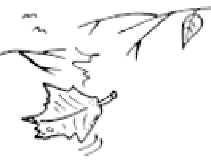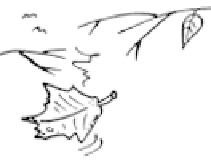Information Technology Reference
In-Depth Information
(a) (b) (c)
Fig. 9.8.
Response of the super-resolution network to a line-drawing: (a) original low res-
olution image (pixelized); (b) bicubic interpolation (blurred); (c) output of iterative super-
resolution network (crisp).
Input
RNN
FFNN
RNN
FFNN
Target
small large
Fig. 9.9.
Outputs of different super-resolution networks. The responses of large and small
versions of the recurrent network (RNN) and the feed-forward network (FFNN) to the low-
resolution input are shown.
the high-resolution targets, given the low-resolution inputs. The RNN outputs have
a slightly higher perceptual quality than the responses of the corresponding FFNNs.
In Figure 9.10, the mean square error of all four networks is displayed. The test
set reconstruction error of the recurrent networks decreases quickly and remains
below the error of the corresponding FFNN after six time steps. At iterations 9 and
10 the small RNN outperforms even the large FFNN. When iterated beyond the
trained cycles, the reconstruction error increases slightly again. This behavior could
be prevented by training the network for more iterations, but this was not done here
since ten iterations seem to be sufficient to solve the super-resolution task.


























































Search WWH ::

Custom Search